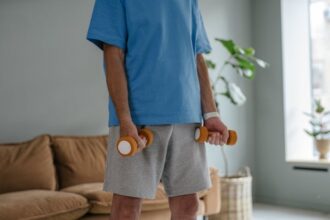A new analysis published in the British Journal of Sports Medicine suggests that “exercise snacks” — short bursts of physical activity lasting five minutes or less — could help improve cardiorespiratory fitness among adults who are otherwise physically inactive. The review found that this approach may be a practical and appealing way to increase fitness levels without requiring large time commitments or structured workout sessions.
Researchers noted that adherence to exercise snacking was high, suggesting that it may successfully address two of the most common barriers to regular physical activity: lack of time and low motivation. Around one in three adults globally, and 80 per cent of teenagers, fail to meet recommended physical activity targets. This inactivity contributes significantly to poor health outcomes, including cardiovascular disease and metabolic disorders, underscoring the need for accessible exercise strategies.
To assess the effectiveness of this approach, the researchers reviewed 11 clinical trials conducted in Australia, Canada, China, and the United Kingdom, involving 414 sedentary or physically inactive adults. The majority of participants were women, and the interventions lasted between four and twelve weeks. Exercise snacks were defined as short sessions of moderate-to-vigorous physical activity performed at least twice a day, excluding warm-up and cool-down periods.
Most of the included studies focused on stair climbing — either in single bouts or repeated intervals — particularly for young and middle-aged adults. Among older adults, the dominant forms of activity were leg-focused strength training and tai chi. Overall, the analysis showed that exercise snacking significantly improved cardiorespiratory fitness. However, its effects on muscular endurance, leg strength, and cardiometabolic measures such as blood pressure and cholesterol were less conclusive.
Despite limited evidence for changes in other health indicators, adherence to exercise snacking was notably high. On average, 91 per cent of participants completed their sessions, and 83 per cent sustained the routine throughout the study period. These figures suggest that exercise snacking is not only practical but also feasible in unsupervised, real-world settings — an important consideration for public health strategies targeting widespread inactivity.
The researchers acknowledged several limitations, including the limited number of available studies and their varied designs and methodologies. However, they emphasised that the time-efficient and flexible nature of exercise snacks may help overcome key psychological and logistical barriers to exercise. Short, manageable bouts of physical activity may make it easier for people to maintain consistent movement throughout the day, thereby supporting long-term improvements in fitness and overall health.
More information: Miguel Ángel Rodríguez et al, Effect of exercise snacks on fitness and cardiometabolic health in physically inactive individuals: systematic review and meta-analysis, British Journal of Sports Medicine. DOI: 10.1136/bjsports-2025-110027
Journal information: British Journal of Sports Medicine Provided by BMJ Group








